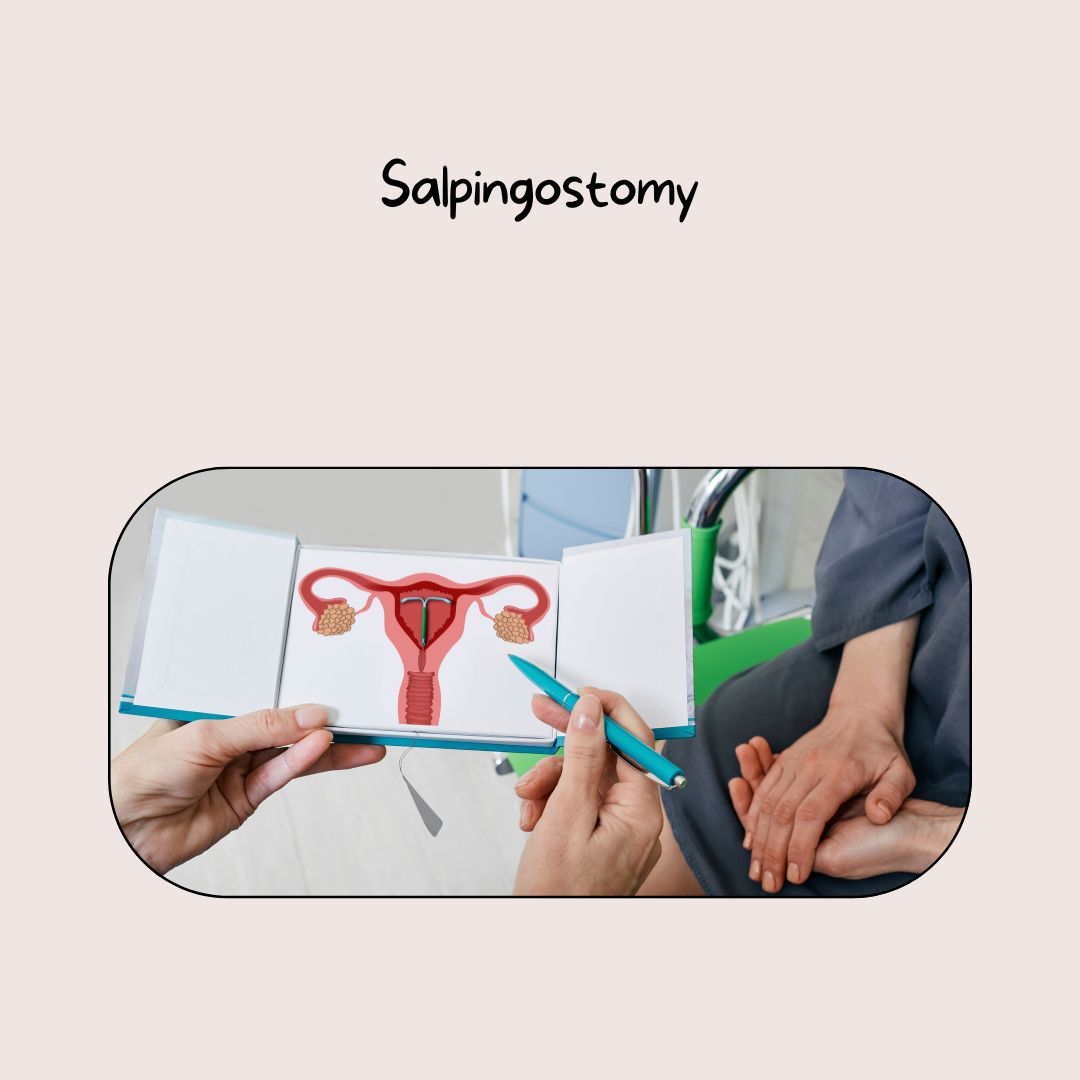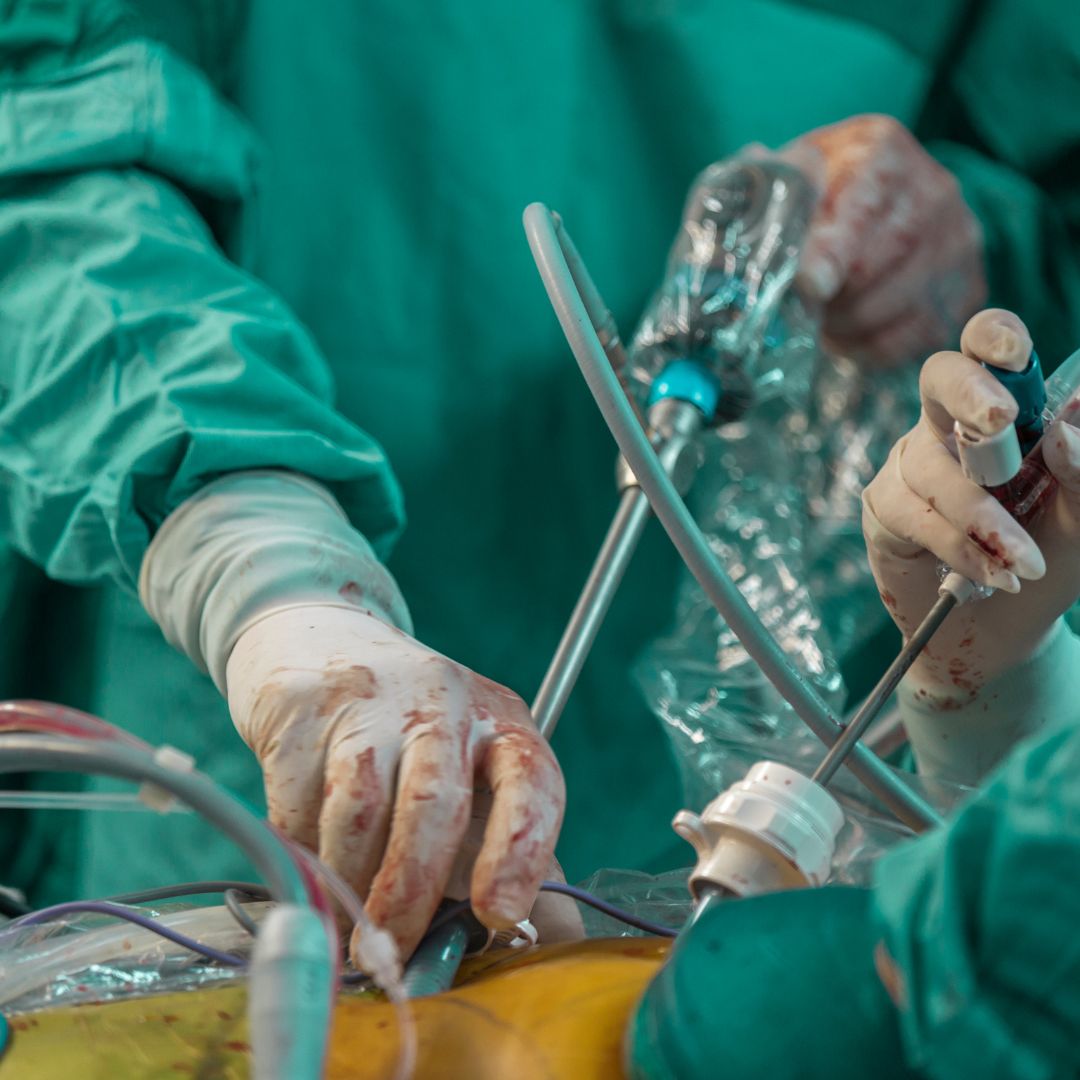Salpingostomy

Salpingostomy: A Comprehensive Guide to the Procedure
Salpingostomy is a surgical procedure performed on the fallopian tubes to repair a blockage or remove an ectopic pregnancy. This article will provide a detailed guide to the procedure, including its definition, reasons for undergoing the procedure, and how it is performed.
Salpingostomy:
Salpingostomy is a surgical procedure that involves making an incision in the fallopian tube to remove blockages, such as scar tissue or ectopic pregnancies. This procedure helps to restore the normal function of the fallopian tube and increases the chances of conception.
Reasons for Undergoing the Procedure:
Salpingostomy is performed for various reasons, including blocked fallopian tubes due to endometriosis, pelvic inflammatory disease, or prior surgery. Additionally, it can be done to remove an ectopic pregnancy, which is a pregnancy that implants outside the uterus.
How the Procedure is Performed:
Salpingostomy can be performed through laparoscopic surgery or an open procedure. In laparoscopic surgery, small incisions are made in the abdomen to insert a camera and instruments. The surgeon then makes an incision in the fallopian tube to remove blockages or remove the ectopic pregnancy. In an open procedure, a larger incision is made in the abdomen, and the fallopian tube is accessed directly to perform the procedure.
Understanding Salpingostomy
What is Salpingostomy?
Salpingostomy is a procedure to repair a blockage or remove an ectopic pregnancy from the fallopian tube. It is typically done when other treatments have failed or are not feasible.
The Difference Between Salpingostomy and Salpingectomy:
Salpingostomy and Salpingectomy: Salpingostomy is the repair of the fallopian tube, whereas salpingectomy is the complete removal of the fallopian tube. Salpingectomy is done when the tube is severely damaged or to prevent future ectopic pregnancies.
Indications for Salpingostomy:
Salpingostomy is indicated when there is a blockage or damage to the fallopian tube, causing infertility or an ectopic pregnancy. It is also performed when other treatments have failed or are not feasible.
Types of Salpingostomy:
There are two types of salpingostomy: fimbrioplasty and segmental resection. Fimbrioplasty is the repair of the fimbria, which is the end of the fallopian tube closest to the ovary. Segmental resection is the removal of a portion of the fallopian tube that is damaged or blocked.
Preparing for Salpingostomy
Initial Consultation:
Before undergoing salpingostomy, you will have an initial consultation with your doctor to discuss your medical history, any previous surgeries, and the risks and benefits of the procedure. You will also have a physical exam and diagnostic tests to determine the cause of your infertility or ectopic pregnancy.
Medical History and Physical Exam:
Your medical history and physical exam will help your doctor determine if you are a good candidate for the procedure. They will ask about any medical conditions or medications that may affect the surgery or your recovery.
Diagnostic Tests:
Diagnostic tests, such as ultrasound or hysterosalpingogram, may be done to assess the condition of your fallopian tubes and uterus.
Risks and Complications:
As with any surgery, there are risks and complications associated with salpingostomy. These include bleeding, infection, damage to surrounding organs, and anesthesia-related complications. Your doctor will discuss these risks with you before the procedure.
Salpingostomy Procedure
Salpingostomy is a surgical procedure that can be performed laparoscopically or through an open incision. Your surgeon will determine which method is best for you based on your individual needs and medical history.
Anesthesia
Before the procedure begins, you will be given anesthesia to ensure that you are comfortable and pain-free throughout the surgery. The type of anesthesia used will depend on the method of surgery chosen by your surgeon.

Laparoscopic Salpingostomy
Laparoscopic salpingostomy is a minimally invasive procedure that involves making small incisions in the abdomen. A laparoscope, a thin tube with a camera and light attached, is then inserted into one of the incisions to provide a view of the pelvic organs. Your surgeon will then use small instruments to make an opening in the fallopian tube and remove the ectopic pregnancy.

Open Salpingostomy
Open salpingostomy is a more traditional surgical approach that involves making a larger incision in the lower abdomen. Your surgeon will then make an incision in the fallopian tube to remove the ectopic pregnancy.
Post-operative Care
After the procedure, you will be monitored closely to ensure that you are recovering well. You may need to stay in the hospital for a few days depending on the type of surgery you had and your individual needs. Your surgeon will provide you with instructions on how to care for yourself after the surgery, including how to manage pain and any other symptoms you may experience.
Recovery from Salpingostomy
After the Procedure
After the surgery, you will be moved to a recovery area where you will be closely monitored as you wake up from the anesthesia. You may feel some discomfort or pain in the abdomen, but medication can help manage these symptoms.
Discharge Instructions
Before you leave the hospital, your surgeon will provide you with specific instructions on how to care for yourself at home, including how to care for the incision site and any medications you may need to take.
Recovery Timeline
The recovery time for salpingostomy varies depending on the individual and the method of surgery. Generally, recovery can take several weeks, and you may need to take time off from work or other daily activities during this time.
Return to Daily Activities
Your surgeon will provide you with specific instructions on when you can resume daily activities, including exercise and sexual activity. It’s important to follow these instructions closely to ensure a smooth recovery and reduce the risk of complications.
Risks and Complications of Salpingostomy
As with any surgical procedure, there are risks and complications associated with salpingostomy. These include:
Ectopic pregnancy
It’s important to discuss these risks with your surgeon before undergoing the procedure. Your surgeon will also provide you with specific instructions on how to reduce the risk of complications during and after the surgery.
Results of Salpingostomy
Chances of Success: The success rate of salpingostomy depends on the extent of damage to the fallopian tube. If the damage is minor, the success rate can be as high as 70%. However, if the damage is severe, the success rate may be as low as 20%.
Pregnancy after Salpingostomy: After undergoing salpingostomy, it is possible to get pregnant naturally. However, it may take longer to conceive, and there is still a risk of ectopic pregnancy.
Long-term Effects: Salpingostomy does not have any long-term effects on fertility or menstrual cycles.
Alternatives to Salpingostomy
While salpingostomy is often the preferred treatment for women with fallopian tube damage, there are other options available:
Salpingectomy: This is the surgical removal of the fallopian tube. This procedure may be necessary if the damage to the tube is too severe for salpingostomy.
In vitro fertilization (IVF): IVF involves fertilizing an egg outside of the body and then implanting it in the uterus. This bypasses the need for fallopian tubes and may be a good option for women who have had both tubes removed.
Gamete intrafallopian transfer (GIFT): GIFT involves transferring eggs and sperm into the fallopian tubes, where fertilization occurs naturally.
Intracytoplasmic sperm injection (ICSI): ICSI involves injecting a single sperm directly into an egg, which is then implanted in the uterus.
Cost of Salpingostomy
The cost of salpingostomy varies depending on the location and the surgeon. On average, the cost of the procedure can range from $3,000 to $7,000.
Insurance Coverage for Salpingostomy
Most insurance plans cover salpingostomy, but it is important to check with your provider to determine the extent of coverage. Preauthorization may be necessary, and the approval process can take several weeks.
Finding a Surgeon for Salpingostomy
Choosing a Surgeon
Patients should choose a surgeon who is experienced in performing salpingostomy and has a good reputation in the medical community. Patients can ask for referrals from their primary care physician or seek recommendations from friends and family members who have undergone similar procedures.
Questions to Ask Your Surgeon
Patients should ask their surgeon about their experience with salpingostomy, the type of procedure recommended, and the expected outcome. Patients should also ask about the risks and potential complications of the procedure, as well as the post-operative care and recovery process.
Researching Surgeons
Patients can research surgeons by reviewing their credentials, certifications, and experience. Patients can also review online ratings and reviews from other patients, as well as information from the state medical board.
Frequently Asked Questions about Salpingostomy
What is the recovery time for Salpingostomy? The recovery time for salpingostomy can vary depending on the type of procedure performed and the patient’s overall health. Generally, recovery time ranges from 1-2 weeks for laparoscopic salpingostomy to 2-3 weeks for open salpingostomy.
Can I get pregnant after Salpingostomy? Yes, you can get pregnant after a salpingostomy. However, the success rate of pregnancy will depend on various factors, including the extent of the damage to the fallopian tubes and the overall health of the patient. It is important to discuss your options with your surgeon and fertility specialist.
Will Salpingostomy affect my menstrual cycle? Salpingostomy should not affect your menstrual cycle. However, some women may experience temporary irregularities in their menstrual cycle after the procedure.
Is Salpingostomy painful? Salpingostomy is performed under general anesthesia, so the patient should not feel any pain during the procedure. After the surgery, patients may experience some discomfort, which can be managed with pain medication.
Conclusion:
Summary of Salpingostomy: Salpingostomy is a surgical procedure that can help women who are struggling with fertility issues due to damage or blockages in their fallopian tubes. The procedure involves creating a small incision in the fallopian tube to remove the blockage or repair the damaged area, allowing for improved fertility.
One Comment